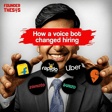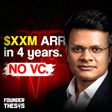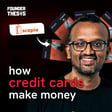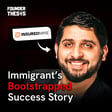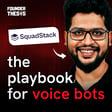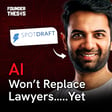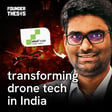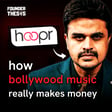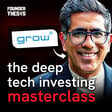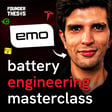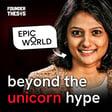
The B2B Whisperer: Dhruv Verma's Secrets to Landing (and Keeping) Big Clients
"B2B sales is not selling a product. It's building up a relationship."
This insight from Dhruv Verma underscores a core theme of our conversation: in the high-stakes world of B2B, particularly with large enterprises, trust and deep understanding built through relationships are paramount, often trumping product features alone.
Dhruv Verma is the Founder & CEO of Thriwe, a global B2B consumer benefits marketplace he started in 2011 (initially as GolfLan). Facing extreme hardship early on, including selling his house to keep the company alive, Dhruv pivoted and built Thriwe into a leader serving over 15 million customers globally. The company is profitable and achieved revenues of ~$32 million (approx. 300 Cr INR), while Dhruv and his team retained ~65% equity.
Key Insights from the Conversation:
👉The immense power of resilience and learning from failure, including knowing when to cut losses decisively.
👉Why pivoting from B2C to a B2B focus unlocked significant growth and product-market fit.
👉The art of B2B sales: building deep trust and offering intuitive, innovative solutions beyond just delivering value.
👉How strategic acquisitions and building a strong tech stack create competitive advantages.
👉The importance of maintaining founder control and building a sustainable, profitable business over chasing valuations.
Chapters:
0:00:01 - Early Drive: Making Money Since School Days
0:07:14 - Corporate Stints & Early Failed Ventures
0:09:05 - Idea Spark: Golf & Mass Affluent Benefits
0:12:41 - Launching GolfLan
0:15:14 - Painful Failure & Selling House
0:18:24 - GolfLan B2C Model & The Breakage Problem
0:27:41 - The Profitable B2B Pivot
0:35:28 - Expanding Beyond Golf: Becoming Thriwe
0:41:17 - Building Supply, Tech Edge & Creative Products
0:51:14 - The Art of High-Value B2B Relationship Sales
1:07:21 - Rebranding Lessons & Founder Control
1:10:48 - Angel Investing & Tier 2/3 India Focus
#FounderThesis #AkshayDatt #StartupIndia #Entrepreneurship #B2BSales #LoyaltyPrograms #CustomerEngagement #Pivoting #BusinessStrategy #Resilience #Bootstrapping #Profitability #StartupJourney #Leadership #Innovation #GolfLan #IndianStartups #TechStartup #GlobalBusiness #FounderStory #Podcast #businesspodcast
Disclaimer: The views expressed are those of the speaker, not necessarily the channel.
